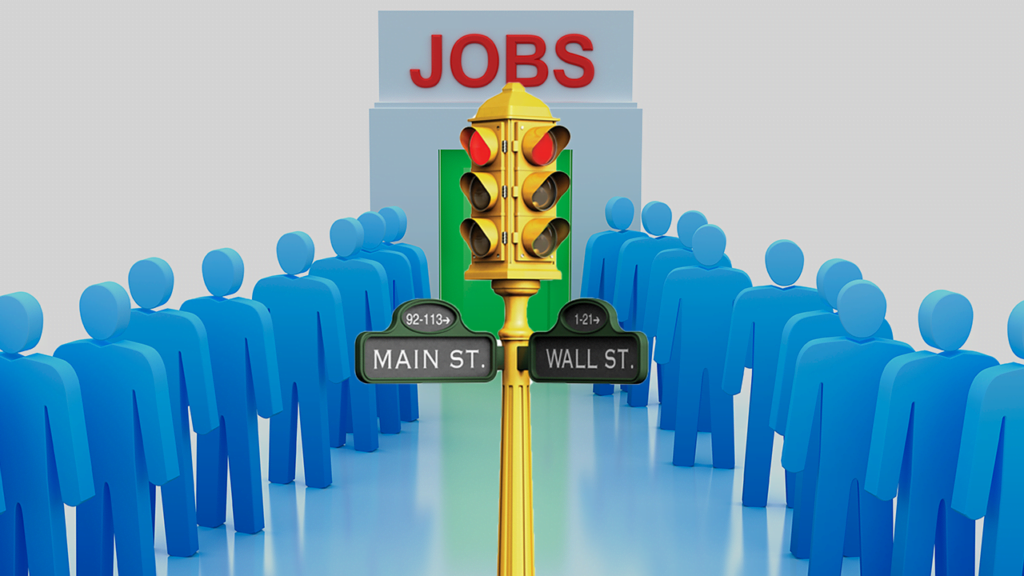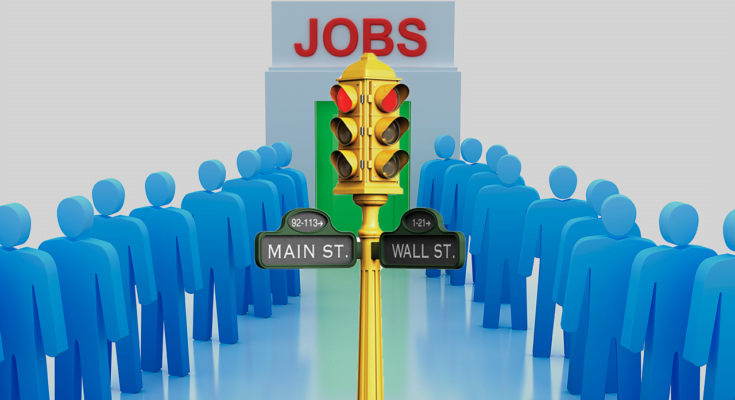Unemployment is a pressing global issue that affects individuals, families, and communities worldwide. It is an epidemic that has far-reaching effects, not only on the economy but also on the mental and physical health of those affected. Unfortunately, the problem of unemployment is often a silent one, with its hidden causes and effects often going unnoticed or unaddressed.
In this article, we will delve into the causes of unemployment, both visible and hidden, and explore the far-reaching impact it has on individuals and society as a whole. We will also discuss the various solutions that can be implemented to reduce the incidence of unemployment, including government policies, employer responsibility, and social safety nets. By shedding light on this critical issue, we hope to raise awareness and spark action to address this silent epidemic.
The Scope of Unemployment
Unemployment is a multifaceted issue with a broad scope that affects individuals, families, and communities at large. The scale of the problem can be staggering, with the number of unemployed individuals often reaching into the millions in many countries around the world. According to the International Labour Organization (ILO), the Global unemployment is slated to rise slightly in 2023, by around 3 million, to 208 million (corresponding to a global unemployment rate of 5.8 per cent). The moderate size of this projected increase is largely due to tight labour supply in high-income countries. These figures highlight the extent of the issue and the urgent need to address it.
The scope of unemployment goes beyond mere numbers and statistics. The different types of unemployment, including frictional, structural, and cyclical, all have their unique impact on the job market and the broader economy. Frictional unemployment, for instance, occurs when workers are between jobs and actively seeking new employment opportunities. Structural unemployment, on the other hand, is caused by changes in the economy, such as technological advancements or outsourcing, that render certain skills or industries obsolete. Cyclical unemployment, meanwhile, is a result of economic fluctuations such as recessions.

Moreover, unemployment has a wide-reaching impact beyond just the individuals directly affected. It can result in decreased economic growth, increased social unrest, and higher crime rates. Additionally, the mental health impact of unemployment cannot be overlooked, with depression, anxiety, and other mental health issues being common among those experiencing long-term joblessness.
The Silent Epidemic of Unemployment
Unemployment is often described as a silent epidemic because its impact often goes unnoticed or unacknowledged. While it is a significant issue affecting individuals and communities worldwide, it is often overshadowed by other economic and political concerns. The silent nature of the issue can make it difficult to address and tackle effectively.
The mental health impact of unemployment is one of the most significant ways in which it manifests as a silent epidemic. Long-term joblessness can result in feelings of hopelessness, low self-esteem, and depression, leading to a decline in mental health and well-being. Unfortunately, the stigma surrounding unemployment and mental health issues can make it challenging for those affected to seek help or support.
Additionally, unemployment’s silent nature can lead to a lack of awareness of the problem’s scale and impact. Many individuals affected by unemployment may not report their situation, resulting in an underestimation of the problem’s true extent. This underestimation can lead to a lack of urgency and action to address the issue.
The Main Causes of Unemployment
The main causes of unemployment can be categorized into structural, cyclical, and frictional unemployment. Structural unemployment occurs when changes in the economy, such as technological advancements or outsourcing, render certain skills or industries obsolete. Cyclical unemployment, on the other hand, is a result of economic fluctuations, such as recessions or economic downturns. Finally, frictional unemployment is caused by workers being between jobs and actively seeking new employment opportunities.
In addition to these broad categories, other factors can contribute to unemployment. One of the most significant of these is the lack of job opportunities in certain industries or regions. For example, certain geographic areas may have a higher incidence of joblessness due to a lack of available work. Discrimination in hiring, such as bias against certain ethnic or age groups, can also contribute to unemployment.
Also, changes in government policies and regulations can also impact unemployment levels. For example, changes in minimum wage laws or tax policies can affect businesses’ ability to hire and retain employees. Inadequate education and training can also result in a mismatch between the skills of job seekers and the requirements of available jobs.
Hidden Causes of Unemployment
While the main causes of unemployment are often visible, there are also hidden factors that contribute to the problem. These hidden causes can be challenging to identify and address but are essential to understand to develop effective solutions.
One of the most significant hidden cause is the mismatch between the skills of job seekers and the requirements of available jobs. This issue is often referred to as the skills gap, where job seekers do not have the skills or training necessary to meet the demands of available positions. This mismatch can result in a situation where there are open positions that remain unfilled, even as individuals continue to struggle with unemployment.

Another hidden cause of unemployment is the underemployment of workers. Underemployment occurs when individuals are employed in positions that do not match their qualifications, experience, or skills. This situation can arise due to the lack of job opportunities in certain fields, geographic areas, or industries, forcing individuals to take jobs below their skill level. While these individuals are technically employed, they may still face financial struggles and reduced career opportunities, leading to job dissatisfaction and reduced productivity.
Additionally, economic factors such as inflation, high interest rates, and currency fluctuations can also contribute to hidden unemployment. These factors can make it difficult for businesses to operate effectively, resulting in reduced job opportunities and layoffs.
Effects of Unemployment
Unemployment can have far-reaching effects on individuals, families, communities, and the economy as a whole. The impacts of joblessness can be both direct and indirect and can affect various aspects of people’s lives.
One of the most immediate effects of unemployment is financial hardship. Losing a job can result in a sudden loss of income, leaving individuals struggling to pay bills, make ends meet, and support their families. This situation can lead to increased debt, reduced savings, and difficulty accessing necessary resources, such as healthcare.
It can also have negative impacts on individuals’ mental and physical health. Job loss can result in increased stress, anxiety, and depression, leading to a range of mental health challenges. In addition, individuals facing unemployment may be more likely to engage in unhealthy behaviors, such as smoking, drinking, or drug use, as a way to cope with stress.
Solutions for Unemployment
While there is no one-size-fits-all solution to joblessness, several strategies can help reduce unemployment rates and promote workforce development.
One of the most effective solutions for unemployment is to promote education and training programs that align with the needs of the job market. By providing individuals with the necessary skills and training to meet the demands of available jobs, training programs can help bridge the skills gap and increase employability.
Another solution is to support small and medium-sized enterprises (SMEs). SMEs are often significant drivers of job creation, and policies that support their growth and development can result in increased employment opportunities. This support can include access to finance, training, and capacity-building programs, and regulatory frameworks that encourage entrepreneurship and innovation.
Furthermore, investing in infrastructure and promoting public-private partnerships can also be a solution for unemployment. Infrastructure projects can create employment opportunities in construction, maintenance, and operation, while public-private partnerships can result in increased investment and job creation in various sectors.
Government Policies and Programs
Various policy interventions and programs can help create job opportunities, support job seekers, and promote workforce development.
Fiscal policy involves the use of government spending and taxation to influence economic activity. Expansionary fiscal policies, such as increased government spending and tax cuts, can stimulate economic growth, resulting in increased job creation and reduced unemployment rates.
And also, Monetary policy involves the use of interest rates and the money supply to influence economic activity. Expansionary monetary policies, such as reducing interest rates and increasing the money supply, can also stimulate economic growth and job creation.
Employer Responsibility
Employers can do this by expanding their businesses, investing in new ventures, and creating new positions within their organizations. Additionally, employers can contribute to job creation by supporting the growth and development of small and medium-sized enterprises (SMEs), which are often significant drivers of job creation.
Furthermore, employers can also contribute to the reduction of unemployment rates by providing employment opportunities to individuals from underrepresented groups, such as women, people of color, and individuals with disabilities. By providing equal opportunities for all candidates, employers can help address systemic barriers that prevent certain groups from accessing job opportunities.




